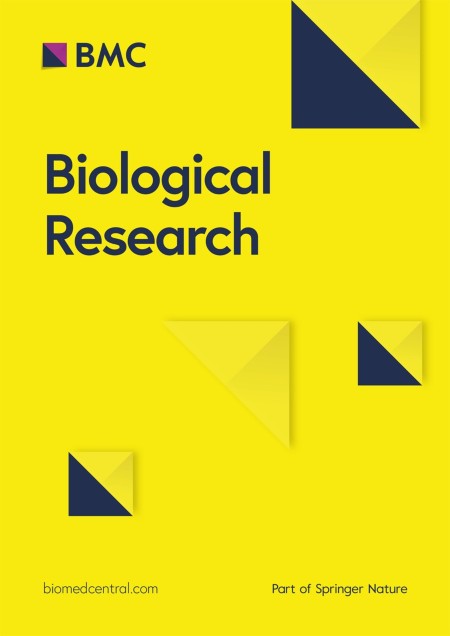Uncovering the role of the subcommissural organ in early brain development through transcriptomic analysis
IF 4.6
2区 生物学
Q1 BIOLOGY
引用次数: 0
Abstract
The significant role of embryonic cerebrospinal fluid (eCSF) in the initial stages of brain development has been thoroughly studied. This fluid contains crucial molecules for proper brain development such as members of the Wnt and FGF families, apolipoproteins, and retinol binding protein. Nevertheless, the source of these molecules remains uncertain since they are present before the formation of the choroid plexus, which is conventionally known as the primary producer of cerebrospinal fluid. The subcommissural organ (SCO) is a highly conserved gland located in the diencephalon and is one of the earliest differentiating brain structures. The SCO secretes molecules into the eCSF, prior to the differentiation of the choroid plexus, playing a pivotal role in the homeostasis and dynamics of this fluid. One of the key molecules secreted by the SCO is SCO-spondin, a protein involved in maintenance of the normal ventricle size, straight spinal axis, neurogenesis, and axonal guidance. Furthermore, SCO secretes transthyretin and basic fibroblast growth factor 2, while other identified molecules in the eCSF could potentially be secreted by the SCO. Additionally, various transcription factors have been identified in the SCO. However, the precise mechanisms involved in the early SCO development are not fully understood. To uncover key molecular players and signaling pathways involved in the role of the SCO during brain development, we conducted a transcriptomic analysis comparing the embryonic chick SCO at HH23 and HH30 stages (4 and 7 days respectively). Additionally, a public transcriptomic data from HH30 entire chick brain was used to compare expression levels between SCO and whole brain transcriptome. These analyses revealed that, at both stages, the SCO differentially expresses several members of bone morphogenic proteins, Wnt and fibroblast growth factors families, diverse proteins involved in axonal guidance, neurogenic and differentiative molecules, cell receptors and transcription factors. The secretory pathway is particularly upregulated at stage HH30 while the proliferative pathway is increased at stage HH23. The results suggest that the SCO has the capacity to secrete several morphogenic molecules to the eCSF prior to the development of other structures, such as the choroid plexus.通过转录组分析揭示亚组织器官在早期大脑发育中的作用
胚胎脑脊液(eCSF)在大脑发育初始阶段的重要作用已得到深入研究。脑脊液中含有大脑正常发育所需的重要分子,如 Wnt 和 FGF 家族成员、脂蛋白和视黄醇结合蛋白。然而,这些分子的来源仍不确定,因为它们在脉络丛形成之前就已存在,而脉络丛通常被认为是脑脊液的主要产生者。硬脑膜下器官(SCO)是位于间脑中的一个高度保守的腺体,是最早分化的大脑结构之一。在脉络丛分化之前,SCO 向脑脊液中分泌分子,对脑脊液的平衡和动态起着关键作用。SCO分泌的关键分子之一是SCO-spondin,这是一种参与维持正常脑室大小、直脊柱轴、神经发生和轴突导向的蛋白质。此外,SCO 还能分泌转甲状腺素和碱性成纤维细胞生长因子 2,而电子脑脊液中已确定的其他分子也可能由 SCO 分泌。此外,在 SCO 中还发现了各种转录因子。然而,SCO 早期发育的确切机制尚未完全明了。为了揭示 SCO 在大脑发育过程中发挥作用的关键分子和信号通路,我们对胚胎小鸡 SCO 在 HH23 和 HH30 阶段(分别为 4 天和 7 天)进行了转录组分析。此外,我们还使用了来自 HH30 整个小鸡大脑的公开转录组数据来比较 SCO 和整个大脑转录组的表达水平。这些分析表明,在这两个阶段,SCO都不同程度地表达了骨形态发生蛋白、Wnt和成纤维细胞生长因子家族的多个成员、参与轴突导向的多种蛋白、神经原和分化分子、细胞受体和转录因子。分泌途径尤其在 HH30 阶段上调,而增殖途径则在 HH23 阶段增加。结果表明,在脉络丛等其他结构发育之前,SCO有能力向eCSF分泌多种形态发生分子。
本文章由计算机程序翻译,如有差异,请以英文原文为准。
求助全文
约1分钟内获得全文
求助全文
来源期刊

Biological Research
生物-生物学
CiteScore
10.10
自引率
0.00%
发文量
33
审稿时长
>12 weeks
期刊介绍:
Biological Research is an open access, peer-reviewed journal that encompasses diverse fields of experimental biology, such as biochemistry, bioinformatics, biotechnology, cell biology, cancer, chemical biology, developmental biology, evolutionary biology, genetics, genomics, immunology, marine biology, microbiology, molecular biology, neuroscience, plant biology, physiology, stem cell research, structural biology and systems biology.
 求助内容:
求助内容: 应助结果提醒方式:
应助结果提醒方式:


